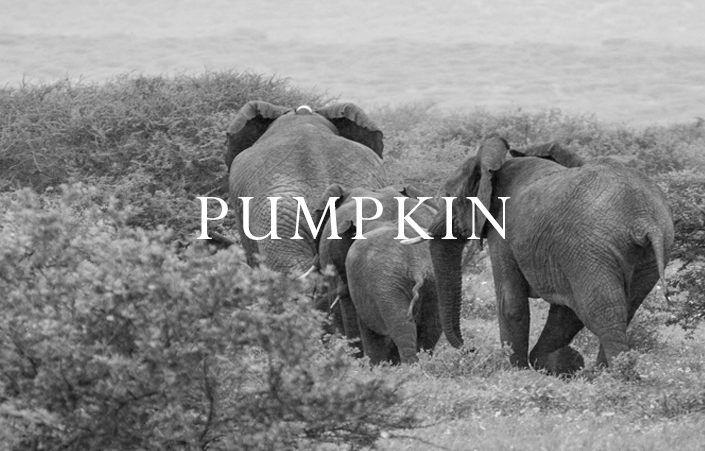- Wenn du dich für eine Auswahl entscheidest, wird die Seite komplett aktualisiert.
- Wird in einem neuen Fenster geöffnet.
Pumpkin

Estimated to be born in1979 to Polly, Pumpkin was a member of the so-called PA family, who were first sighted and photographed in 1973 by Cynthia Moss, a pioneering elephant researcher working along Amboseli Trust For Elephants.
Cynthia’s colleague Joyce Poole was out observing the PA family and surprised to see them all begin to run, leaving one animal behind lying on the ground.
It was Polly. When Joyce got to her, her legs were kicking but she was soon dead. The only thing Joyce could see were two puncture wounds on one leg. It must have been a very large snake to get through that skin. Pumpkin was only two years and two months old at the time of her mother’s death. Most calves this age would die without a mother – but not Pumpkin, who continued to grow under the leadership and care of her aunts.
Over the years, things were going great for Pumpkin and her family, and she started to have some offspring on her own. In 2009, the PAs were hit with the worst drought in living memory in Amboseli (Kenya). By the end of that year, 83% of the wildebeests, 71% of the zebras, and 61% of the buffaloes had died. Close to 400 elephants perished from both the drought and an upsurge in poaching. The problem was that there was almost no vegetation left to eat. Amboseli always had fresh water because of the underground rivers coming from Kilimanjaro. These rivers create permanent swamps in the Park. So the animals did not die of thirst but rather from hunger. In addition, in the case of the elephants, as they weakened they appear to succumb to disease as well.
Of the adult females over 50 years old only two survived in Amboseli. Over half of the matriarchs died, including Philomena and sadly Pumpkin also succumbed. Losing such important females must have been very difficult for the family, as they struggled with the challenge of making it through without the leadership of experienced family members.
Photo and text credit: Cynthia Moss, Amboseli Trust For Elephants, Save the Elephants


